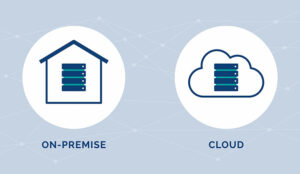Dan Davies of Maintel discusses why, when embarking on your digital transformation journey, it’s important to consider what moving to the cloud could do for your business.
Cloud computing is experiencing huge growth in both public and private provision for all workloads. With more than a trillion pounds’ worth of annual spending thought to be affected by a global shift to cloud by 2020, it’s safe to say that a move to the cloud is on the minds of many businesses.
In fact, we have seen significant growth in customers evaluating and adopting cloud over on-premise, with 80% of customers at the start of 2020 looking at beginning a digital transformation journey
But why should you consider a cloud-delivered service over a legacy on-premise environment? Not only can cloud technology enable digital workplace strategies and create greater agility in the delivery of a platform for digital workplace change, it can also have a significant impact on cost and speed to service.
The cost savings from moving your communications estate to the cloud can come from a myriad of different sources. For example, consolidating large legacy on-premise estates, each with its own physical footprint, power, cooling and support costs, and consolidating local phone lines across multiple sites and realizing the economies of scale that central cloud aggregation provides.
The agility a cloud service gives a business to flex and adjust as their own market changes is also compelling, with the latest features and functionality available to them without the traditional upgrade cycle.
It’s significant for customers to move to a cloud service that saves them money and lets them get on with the business and services that are their primary concern. Not to mention enabling the IT department to get on with innovative improvements to really help the organization.
However, for all the benefits of moving to the cloud, there are execution challenges that IT leaders face. As such, it is important to find the right partner for your business, with the experience and technical competence to support your projects, avoid pitfalls, and support you on your digital transformation journey.
When we think of smaller businesses in the SME space, for example, moving to the cloud can be relatively simple. Once you’ve communicated with your employees and completed the correct readiness and training, cutting across from an old system to a new service can be completed fairly quickly.
But when we consider bigger organizations with greater scale and complexities, there are more challenges to consider: Can their complex requirements be met by a more vanilla public cloud service, or do they need to consume a virtual private cloud service that can be personalized to their needs?
The virtual private cloud approach also brings with it the ability to support a hybrid cloud environment. Comparatively, the new cloud service is either integrated with the legacy on-premise environment to allow a phased, risk-free migration strategy, or where local edge services are deployed as an extension of the cloud core to support requirements such as high-density local analogue devices, or integration with paging systems, for example.
A “one size fits all” commercial model also doesn’t work. Some organizations have a heavy investment in on-premise application licensing and devices, which can significantly reduce the cost of migrating to a cloud service, whereas others prefer to cut their ties with their legacy environment and move to a flexible subscription model that can grow and shrink as they need it to.
Sourcing a provider that gives you flexibility is key to getting the right cloud service. Be sure to do your research, and consider a provider that has:
- Flexibility of cloud deployment and consumption models
- The appropriate service levels for your business
- Scalability that matches your business demands
- Access to a pool of skilled engineering and support resources
- An accredited secure, resilient service to meet your end-user and business outcome requirements
All in all, migrating to the cloud from a legacy on-premise environment is an opportunity to make real improvements to your organization, and realize notable cost savings.
While it may seem daunting, or that the options are endless, be sure to take the time to evaluate your current and future needs and work with an experienced cloud partner like Maintel to create a strong and effective plan.
Author: Robyn Coppell
Published On: 28th Oct 2020 - Last modified: 4th Nov 2020
Read more about - Guest Blogs, Maintel, Videos















